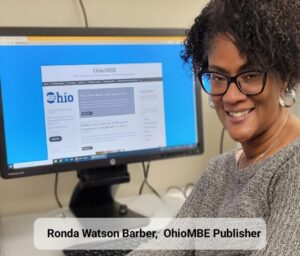COLUMBUS — Several recent actions by Governor Mike DeWine and Ohio Department of Administrative Services (DAS) Director Matt Damschroder are helping enhance diversity and inclusion among the State’s workforce. These include the creation of a diversity and inclusion competency for the State’s employee performance system, the launch of implicit bias training, a disability inclusion conference, and the creation of DAS’ Office of Diversity and Inclusion.
“It is a matter of basic human decency that persons employed by — and served by — the State of Ohio be treated with respect and civility,” said Governor DeWine. “As State employees, we must be committed to being the government for all people.”
Governor DeWine directed DAS, which manages State workforce functions, to take these steps to strengthen diversity and inclusion. Effective this month, Embracing Diversity and Inclusion is now a competency in the State’s performance management system, meaning it will be a measurable part of annual performance reviews for the State’s approximately 50,000 employees. It is defined as displaying and developing understanding of individual differences and viewpoints, and the impact of each on the workplace and customers.
In addition to the new competency, DAS launched Inclusive Listening: Pushing Through our Biases training. Implicit bias refers to the beliefs or stereotypes individuals may unconsciously hold or carry out in their daily interactions with others. This mandatory training will help employees understand bias and its impact on how they serve Ohio.
On Aug. 6, DAS’ Office of Disability Inclusion hosted the Disability Inclusion Conference: Celebrating Ohio’s Commitment to Disability Inclusion. Nearly 750 State employees attended the day-long virtual conference, which featured a variety of topics designed to help State agencies better understand workplace issues that individuals with disabilities face, and to better accommodate those individuals. The conference coincided with the 30th anniversary of the Americans with Disabilities Act.
Damschroder also recently announced a reorganization of DAS’ diversity functions and the creation of the Office of Diversity & Inclusion. The reorganization consolidated the affirmative action and equal employment opportunity services provided to State agencies, boards, and commissions into DAS’ Human Resources Division. The office will provide enterprise services for affirmative action, equal employment opportunity, and disability inclusion.
“We are stronger when we embrace our differences and these changes will help develop human resource strategies with diversity and inclusion as a forethought rather than an afterthought,” said Damschroder. “Initial efforts will focus on enterprise adoption of the new diversity performance competency and embedding disability inclusion in the overall diversity and inclusion strategy.”
Discover more from OhioMBE
Subscribe to get the latest posts sent to your email.
